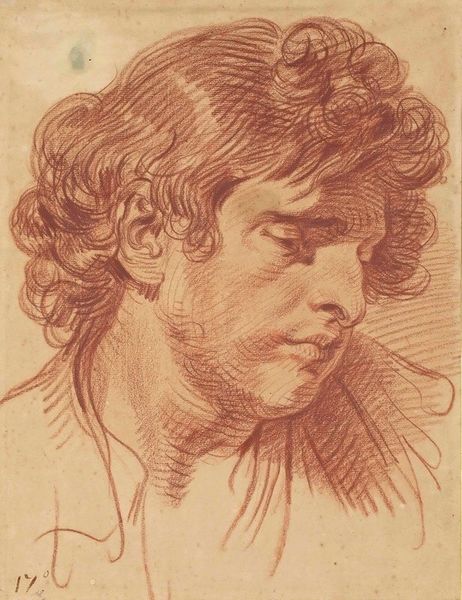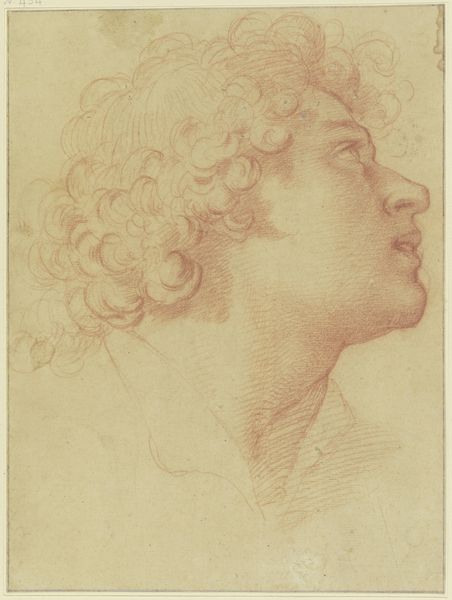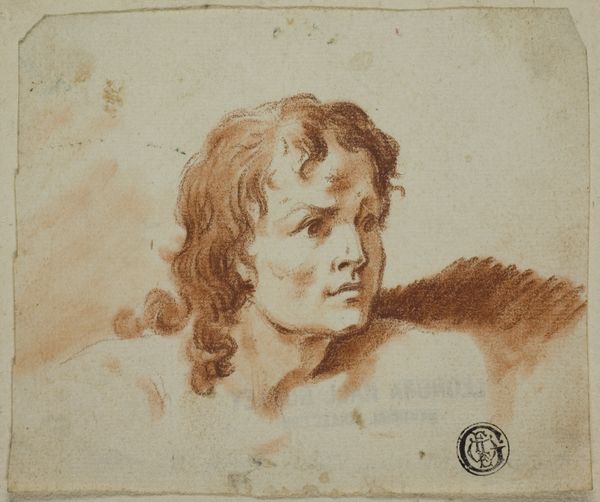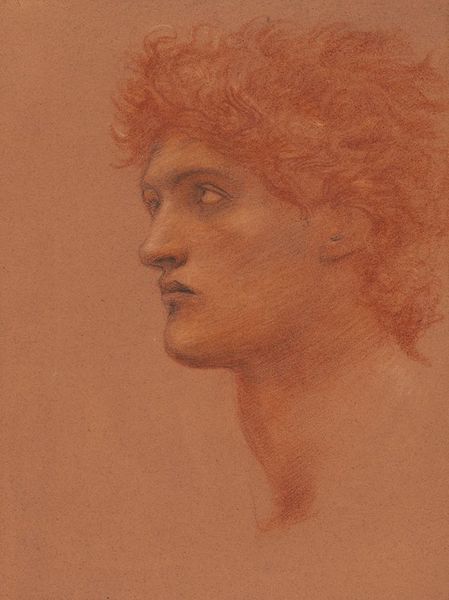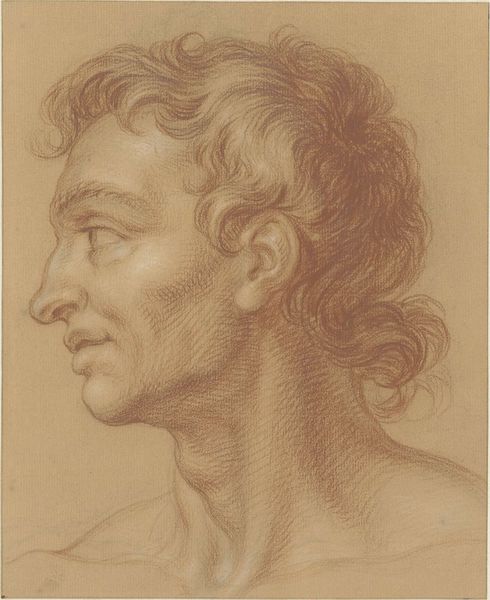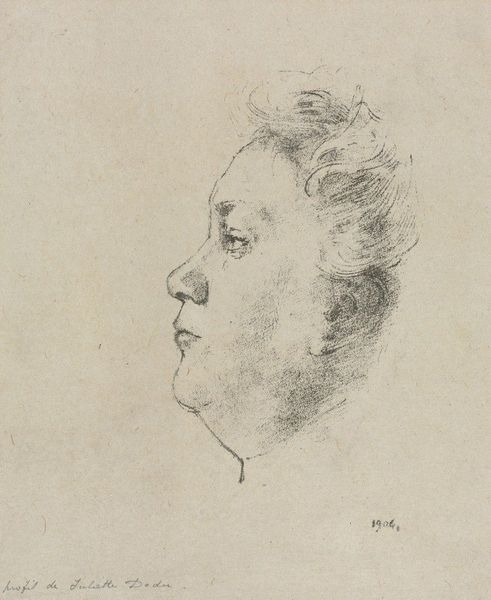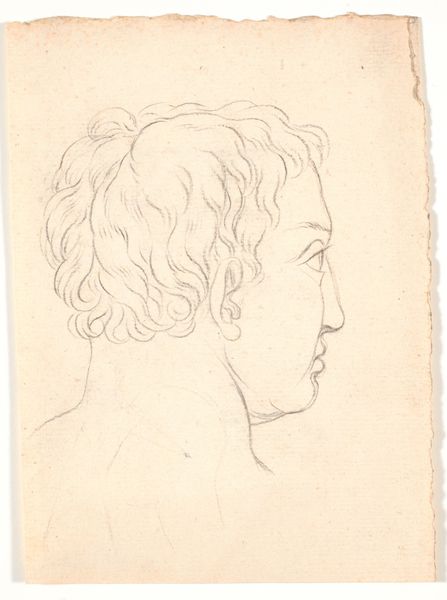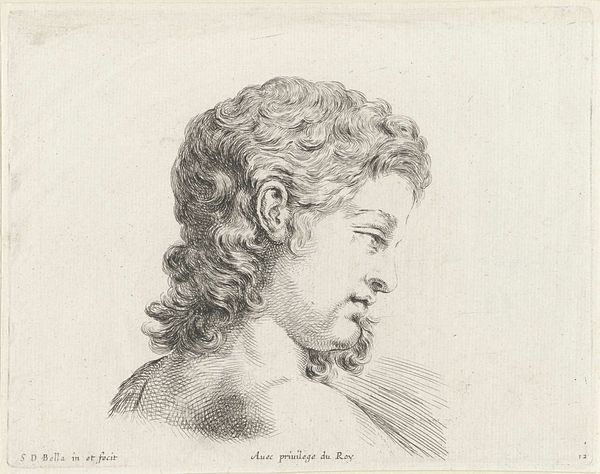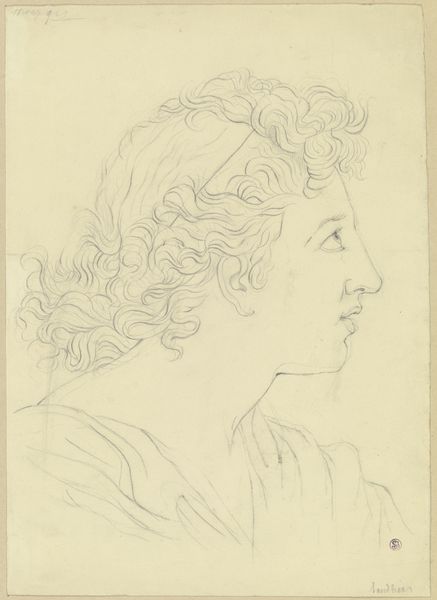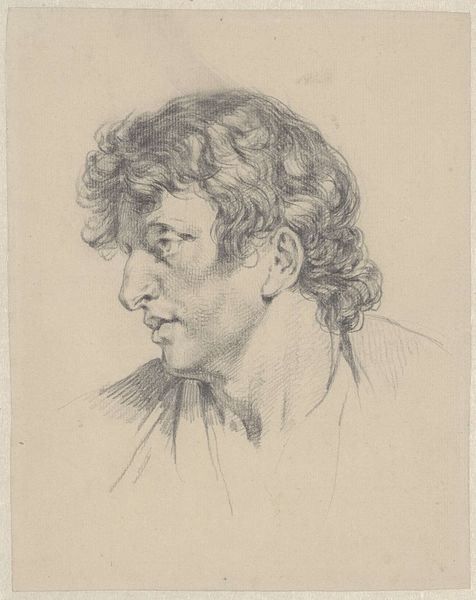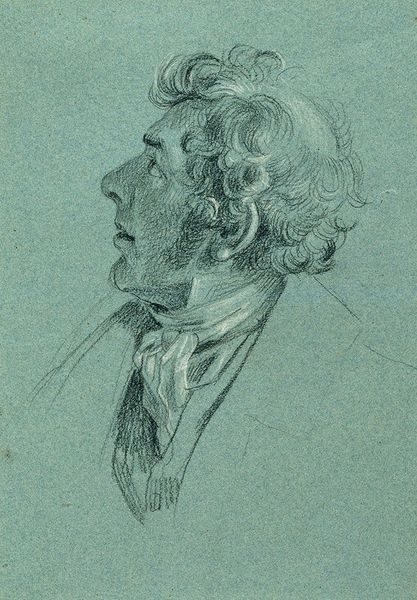
drawing, pencil
#
portrait
#
drawing
#
neoclassicism
#
pencil sketch
#
figuration
#
pencil drawing
#
pencil
#
portrait drawing
#
academic-art
Copyright: Public Domain: Artvee
Curator: This is a work titled "Studie eines Kopfes," or "Study of a Head," executed in pencil by Johann Peter Krafft. The image presents a profile view of a male figure. Editor: It’s immediately striking—so classical, but also there’s something almost stark about it, just this single head isolated against the yellowed paper. Curator: Yes, Krafft, positioned as he was within the sphere of Neoclassicism, really evokes a fascination with ideal forms. His figures often reference antiquity, and we can see echoes of Greek sculpture here in the subject's profile and idealized features. There's a specific, if sometimes imagined, history that carries significant cultural weight. Editor: I'm more focused on the physical presence, the mark-making itself. The medium, just pencil on paper, and its simplicity; look at how those tight curls are rendered, almost obsessively, creating depth with such humble material. I find myself contemplating the physical labor embedded within each line. Curator: I see that materiality contributing to its overall impact. The pencil work helps give a human element to an otherwise very classical image. This intersection of classical ideals with, as you said, the humble nature of its creation opens avenues to examine the social politics behind Neoclassical art. Editor: Absolutely. You have to think about the economic conditions that would enable the commissioning of art like this, the accessibility of materials, and the role of the artist as a skilled laborer within that structure. It is not just aesthetics, but a product of production. Curator: Precisely. Furthermore, portraiture inherently addresses questions of identity, power, and representation. Krafft’s choices – the classical references, the subject’s gaze – invite interrogation regarding whose ideals are being memorialized, whose stories are privileged. What does this idealized man signify within 19th century Viennese society? Editor: And how do we reckon with it today, knowing the legacy and implications of that history? For me, focusing on the pencil, on the very physical act of creating the work, can create a connection between the artist's hand, the viewer's gaze, and the weight of history itself. It reminds us that even an ideal is formed through tangible actions, situated labor. Curator: It certainly reveals that tension between artistic creation and cultural construction. Thinking about it further I wonder how its reception varies based on viewers’ individual or communal experiences. Editor: Absolutely! Examining "Studie eines Kopfes" via its materiality allows an anchoring that is vital to understanding our past, in relationship to this…image of perfection.
Comments
No comments
Be the first to comment and join the conversation on the ultimate creative platform.
